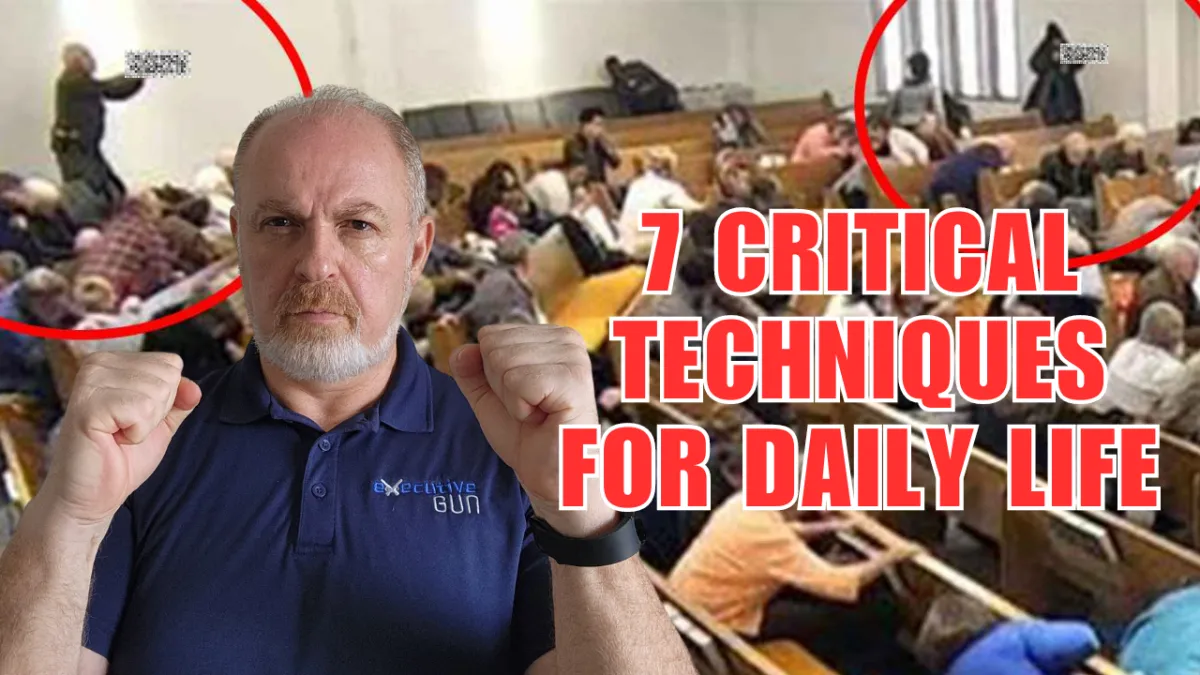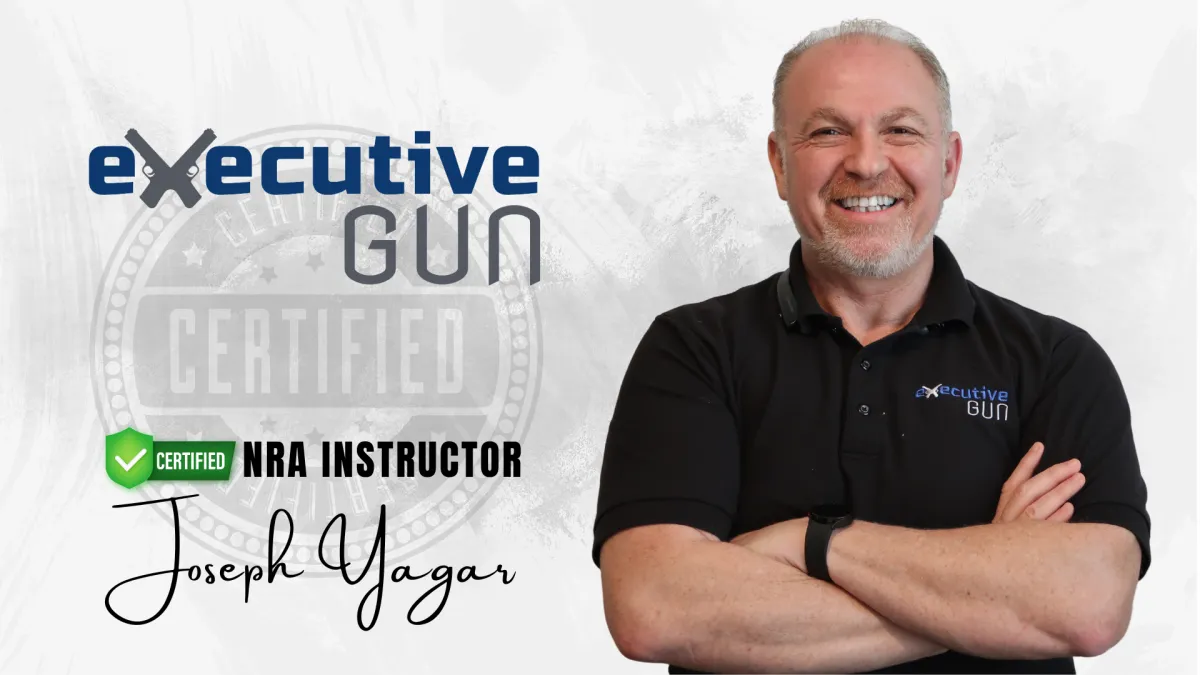

Blog
Tips, Training and News From Executive Gun

Everyday Carry | 7 Critical Techniques Every Gun Owner Should Know.
So, you took some lessons and are going to the range regularly to practice. You can hit some bullseyes and feel pretty good that if you are attacked with deadly force, you can respond with deadly force effectively and lawfully.
Well, if you fit this description, I commend you and recommend that you continue. However, your training is incomplete, and if I dare say grossly insufficient.
I say that because you’re preparing for the fight that you expect to happen, but you’re not preparing for the fight you don’t expect, which is far more likely to happen.
When you train and practice, you decide the time and place. You warm up and then shoot some rounds “for real” at a stationary target that poses no threat. If you miss, it’s no big deal.
The temperature and lighting are usually comfortable, and you’re dressed accordingly. It’s good training, so please don’t stop, but if using a firearm for self-defense, whether at home only or for concealed carry, you ought to add the following training techniques to your routine:
1. Lowlight training.
A home invasion or violent attack may easily happen at night. You may have to respond to home intruders out of a dead sleep or an attacker following you to your car at night.
If you can’t see well, your situational awareness, muscle memory, and feel will have to be spot on to deal with that attack.
2. Force on Force training.
If you have to wrestle an attacker, you don’t only have to stop them from using their weapon if they have one, but also prevent them from taking yours and using it against you. Getting to your gun will be much harder while wrestling. Even harder, if it’s in a purse or backpack.
3. Non-lethal weapons.
If you carry a firearm in public, you ought to be carrying a non-lethal alternative. Using lethal force may not be necessary, and if your only chance of survival is a gun, you’re going to face a tougher legal battle.
Carrying pepper spray, a tactical pen, flashlight, stun gun, or having martial art skills are all good alternatives. But do you know when and how to use them?
Whichever you decide to carry, train to take them out of where they are, for example, a pocket or purse, without looking and as fast and smoothly as you can and put them into action effectively and lawfully.
4. Defending from inside a car.
Road Rage is all the rage these days. In fact, it is the number one cause of self-defense gun use. So, knowing how to legally and effectively defend yourself with a gun inside a vehicle is probably a good idea.
You ought to know how long it takes to reach your firearm wherever in the car it is. How shooting through the windshield and door window will impact the trajectory and force of the bullets in your gun, the noise level, the presence of other passengers, etc.
It’s quite different from shooting at the range.
5. Shooting from different positions.
A violent attack can occur while you’re standing at a Starbucks waiting for your Frappuccino, sitting in a booth at a restaurant, or kneeling in prayer at your house of worship.
If someone barged in and started shooting, will you know how to react?
Can you shoot back from behind your table or pew in a room full of people?
If you had to hit the ground, could you shoot laying on your belly, your back, or your side?
I can assure you that it takes some getting used to.
For some of you, that may be difficult if you have physical limitations, so work with what you have and do what you can. Anything is better than nothing.
6. Moving from room to room.
If you have young kids at home, their rooms may be on the other side of the house or on a different floor. In the event of a home invasion, I suspect your top priority is to get to your kids and protect them.
To do that, you may have to maneuver around the house. You don’t want to just grab your gun and barge out of your bedroom and run to theirs without knowing who’s in the way and how to deal with them. If you become a victim your family may be left undefended.
So, learning how to move through your house quickly, safely, and hopefully undetected, with a gun in your hand is essential.
7. Have a family plan.
Sometimes families are together, but most times not. Parents are working, kids are at school or some extracurricular activity, etc.
Whether at home or out and about, if there is a threat, you ought to have a plan of what each family member does in the event of a threat.
For example, have a code word everyone knows to alert the others of danger. When it is said, who grabs the gun? Who calls 9–1–1? The kids know how to secure their doors and where to hide. If the family is separated, where do you meet and reunite?
When everyone is on the same page, and the plan has been rehearsed, the chances of survival are greatly increased.
And here is the best part, you don’t need a range to learn and practice all that. You can do all that in the comfort of your home or office with dryfire.
You can use a $20–30 toy gun from Amazon or a real gun if you have one. Just make sure to have no live ammunition in your gun or anywhere near your practice area.
The key is to learn the right technique and consistent, deliberate practice over an extended period.
Repetition. Repetition. Repetition. And just a few minutes a day can keep the bad guys at bay.
Now, some of you listening to this may feel that this is overkill. I don’t blame you. I thought so too when I first started my firearm journey.
However, having been a victim, and now being a family man in an unstable world, I have and want the responsibility of doing what I can to protect my family should the need arise.
Like you, I work long hours and want to spend time with my family having fun and showing them love. Not being paranoid and overprotective.
I do a little at a time as I am able to learn new skills, practice a couple of times a week, and teach my family when and if they’re willing to learn.
We all get bogged down by life and postpone things we know we shouldn’t. But it only takes once to make you wish you hadn’t.
Subscribe to Executive Gun Blog and Get Notified When We Post a New Update, Training Trick Or Second Amendment News...

Get Your Florida Concealed Carry Permit With Executive Gun Today!!
Start Watching Our Free Florida Concealed Carry Masterclass™ Now and Get Certified Same day...
All rights Reserved. Copyright 2025 Executive Gun

